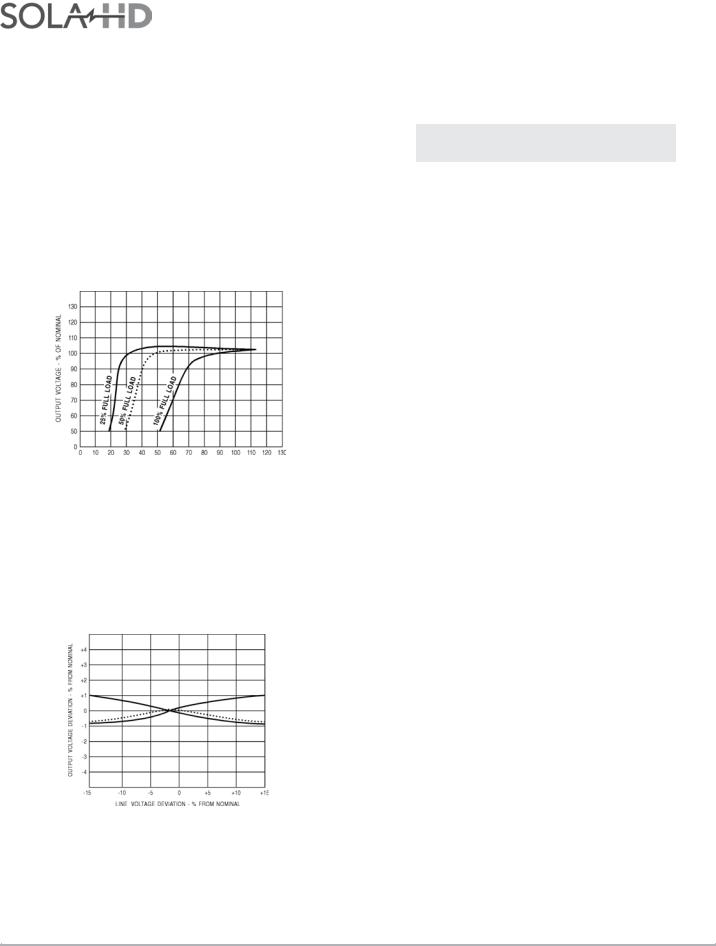Emerson CVS, MCR Brochure

|
|
Power Protection and Conditioning |
1 |
|
|
|
|
|
|
Operating Characteristics of the CVS & MCR Series
Except as noted, all characteristics of SolaHD’s CVS products also apply to the MCR series.
Regulation |
|
|
|
SolaHD’s CVS power conditioners will hold output voltages |
|
|
|
|
CVS Conditioner |
Increase in Output Voltage due to |
|
to ±1.0% or less with input variations as great as ±15% |
|
||
|
Rating - VA |
Load Removal |
|
(115V ±15% or 120 V +10%/-20%). Units operated at less |
|
|
|
|
30 |
3% |
|
than rated load will maintain approximately ±1% regulation |
|
||
|
|
|
|
over a wider input line voltage variation. Output meets NEMA |
|
60 & 120 |
2% |
voltage specifications even when input voltage drops to 65% |
|
|
|
|
250 & over |
1% |
|
of nominal. The output versus input voltage relationship for a |
|
||
|
|
|
|
typical CVS is show in Figure A. |
|
|
|
|
Input Characteristics |
|
|
Figure A: Load Variation
Note: MCR line regulations: ±3% for 60 Hz; ±5% for 50 Hz. The typical performances shown in Figure B indicate that most of the residual changes take place near the lower (95 V) and upper (130 V) ends of the input range. It is
possible to improve output regulation if line variations remain within a restricted range near the center of the nameplate range (for example, 100-120 V).
SolaHD power conditioners include a resonant circuit that is energized whether or not it is serving load. The input current at no load or light load may run 50% or more of the full primary current. As a result, the temperature of the unit may rise to substantially full-load level, even at light or no load. Input power factor will average 90-100% at full load,
but may drop to about 75% at half load and 25% at no load. In any case, the current is always leading. The input no load watts are about 12.5% of the VA rating.
Frequency
Output voltage varies linearly with a change of frequency of the input voltage. This change is about 1.5% of the
output voltage for each 1% change in input frequency and in the same direction as the frequency change.
Figure B: Line Regulation
Normally, the output voltage will rise as the load is decreased. Typical percentages for changes in resistive load from full to zero load as shown below.
Contact Technical Services at (800) 377-4384 with any questions. |
51 |
Visit our website at www.solahd.com. |
|
